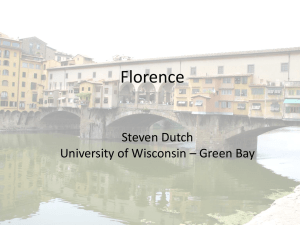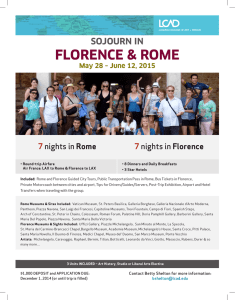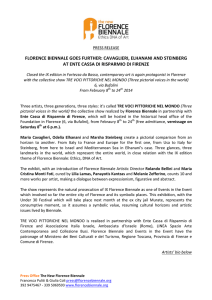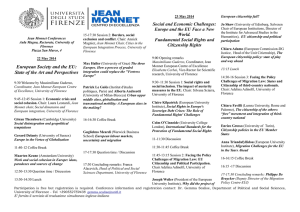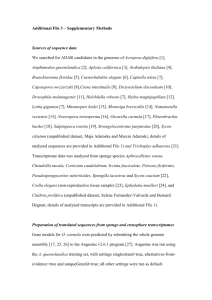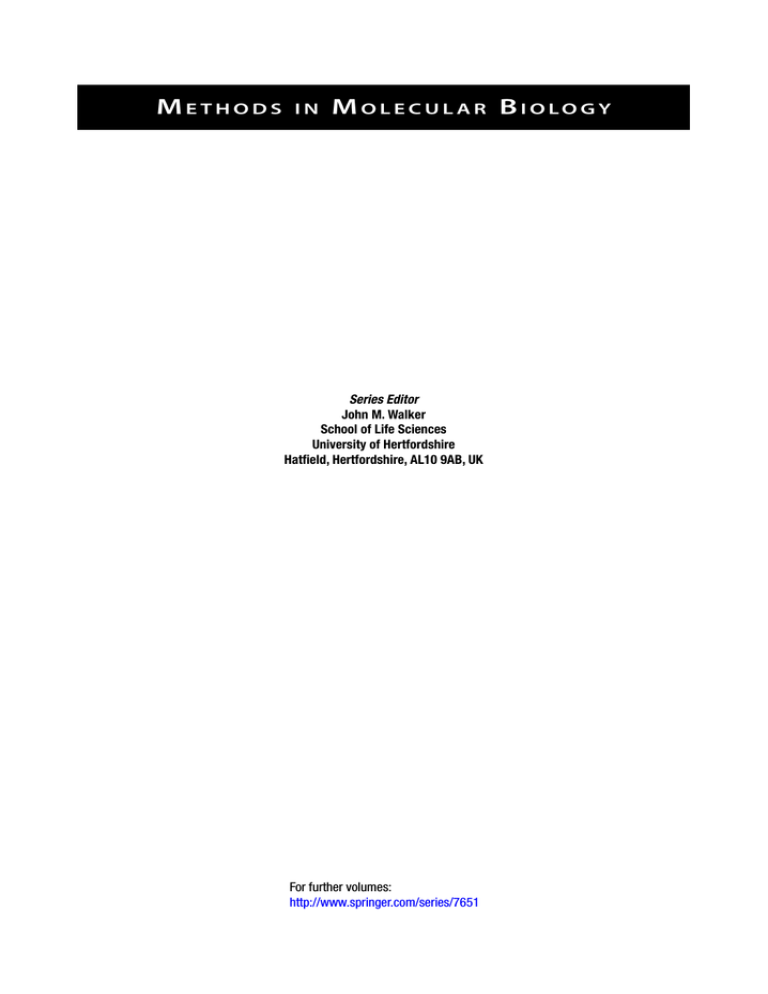
METHODS
IN
M O L E C U L A R B I O LO G Y
Series Editor
John M. Walker
School of Life Sciences
University of Hertfordshire
Hatfield, Hertfordshire, AL10 9AB, UK
For further volumes:
http://www.springer.com/series/7651
Bacterial Pangenomics
Methods and Protocols
Edited by
Alessio Mengoni
Department of Biology, University of Florence, Florence, Italy
Marco Galardini
EMBL-EBI, Cambridge, UK
Marco Fondi
Department of Biology, University of Florence, Florence, Italy
Editors
Alessio Mengoni
Department of Biology
University of Florence
Florence, Italy
Marco Galardini
EMBL-EBI
Cambridge, UK
Marco Fondi
Department of Biology
University of Florence
Florence, Italy
ISSN 1064-3745
ISSN 1940-6029 (electronic)
ISBN 978-1-4939-1719-8
ISBN 978-1-4939-1720-4 (eBook)
DOI 10.1007/978-1-4939-1720-4
Springer New York Heidelberg Dordrecht London
Library of Congress Control Number: 2014951682
© Springer Science+Business Media New York 2015
This work is subject to copyright. All rights are reserved by the Publisher, whether the whole or part of the material is
concerned, specifically the rights of translation, reprinting, reuse of illustrations, recitation, broadcasting, reproduction
on microfilms or in any other physical way, and transmission or information storage and retrieval, electronic adaptation,
computer software, or by similar or dissimilar methodology now known or hereafter developed. Exempted from this
legal reservation are brief excerpts in connection with reviews or scholarly analysis or material supplied specifically for
the purpose of being entered and executed on a computer system, for exclusive use by the purchaser of the work.
Duplication of this publication or parts thereof is permitted only under the provisions of the Copyright Law of the
Publisher’s location, in its current version, and permission for use must always be obtained from Springer. Permissions
for use may be obtained through RightsLink at the Copyright Clearance Center. Violations are liable to prosecution
under the respective Copyright Law.
The use of general descriptive names, registered names, trademarks, service marks, etc. in this publication does not
imply, even in the absence of a specific statement, that such names are exempt from the relevant protective laws and
regulations and therefore free for general use.
While the advice and information in this book are believed to be true and accurate at the date of publication, neither
the authors nor the editors nor the publisher can accept any legal responsibility for any errors or omissions that may be
made. The publisher makes no warranty, express or implied, with respect to the material contained herein.
Printed on acid-free paper
Humana Press is a brand of Springer
Springer is part of Springer Science+Business Media (www.springer.com)
Preface
From a pioneering field a decade ago, now bacterial genomics is a mature research interdisciplinary field, which is approached by ecologists, geneticists, bacteriologists, molecular
biologists, and evolutionary biologists working in medical, industrial, and basic science.
The high diffusion of bacterial genomics in many different fields has been helped by the
low costs of genome and transcriptome sequencing performed by the so-called Next
Generation Sequencing (NGS) technologies. Now, the cost of a draft bacterial genome
sequence is as low as few hundreds of Euro (or Dollars). This low cost is allowing many
laboratories to perform genome sequencing of virtually every “interesting” bacterial strain
they have in hand. In parallel, bioinformatic analysis of the data has grown and the specialized bioinformatician is an obliged professional figure in every laboratory that is interested
in genome sequencing.
One of the most striking differences of bacterial genomics with respect to the genomics
of eukaryotic multicellular organisms is the concept of pangenome, which was introduced
in the late 2005 by researchers working on bacterial pathogenic species. The pangenome is
defined as a genomic approximation to describe a species’ genome in terms of the sum of
core (conserved in all strains) and dispensable (variable among strains) genes. For bacterial
species, the pangenome concept is particularly relevant since closely related strains usually
show large differences in gene content between them. Consequently, when speaking about
bacterial genomics, often people are referring to comparative analysis of bacterial genomes
and then to what we can call “bacterial pangenomics.” Understanding which genetic
components of this large pangenomic variability are functionally, clinically, or evolutionary
relevant is a challenging task; in fact, a large fraction of the dispensable genome is found to
have a poor functional characterization. The availability of powerful and precise analysis
tools is therefore of paramount importance.
Thanks to the large diffusion of bacterial genome analysis (or bacterial pangenomic
studies), the present book is intended to provide the most recent methodologies about
the study of bacterial pangenomes. Three major areas are covered, namely the experimental methods for approaching bacterial pangenomics (“Preparing the bacterial pangenome”), the bioinformatic pipelines for analysis and annotation of sequence data
(“Defining the pangenome”), and finally the methods for inferring functional and evolutionary features from the pangenome (“Interpreting the pangenome”). In each of these
sections, researchers from both academia and private leading companies of NGS and
bioinformatic analysis (as Beijing Genome Institute, Life Technologies, Era7
Bioinformatics) are providing the most up-to-date protocols and procedures for bacterial
genome analysis, from assessment of genome size and structure to the analysis of raw
sequence data and their annotation and biological interpretation in terms of gene activity
and metabarcoding diversity and genome evolution.
The aim of the present book is then to serve as a “field guide” both for qualified investigators on bacterial genomics who want to update their technical knowledge and for lessexperienced researchers who want to start working with bacterial genomics and pangenomics.
v
vi
Preface
Additionally, the book could serve to graduate students as a manual of methods used
in bacterial pangenomics and as a supplemental textbook in classes of genomics and
bioinformatics.
Florence, Italy
Florence, Italy
Cambridge, UK
Alessio Mengoni
Marco Fondi
Marco Galardini
Contents
Preface. . . . . . . . . . . . . . . . . . . . . . . . . . . . . . . . . . . . . . . . . . . . . . . . . . . . . . . . . .
Contributors . . . . . . . . . . . . . . . . . . . . . . . . . . . . . . . . . . . . . . . . . . . . . . . . . . . . . . . . . .
v
ix
1 Pulsed Field Gel Electrophoresis and Genome Size Estimates . . . . . . . . . . . . .
Rosa Alduina and Annalisa Pisciotta
2 Comparative Analyses of Extrachromosomal Bacterial Replicons,
Identification of Chromids, and Experimental Evaluation
of Their Indispensability . . . . . . . . . . . . . . . . . . . . . . . . . . . . . . . . . . . . . . . . .
Lukasz Dziewit and Dariusz Bartosik
3 Choice of Next-Generation Sequencing Pipelines . . . . . . . . . . . . . . . . . . . . . .
F. Del Chierico, M. Ancora, M. Marcacci, C. Cammà, L. Putignani,
and Salvatore Conti
4 The Pyrosequencing Protocol for Bacterial Genomes. . . . . . . . . . . . . . . . . . . .
Ermanno Rizzi
5 Bacterial Metabarcoding by 16S rRNA Gene Ion
Torrent Amplicon Sequencing. . . . . . . . . . . . . . . . . . . . . . . . . . . . . . . . . . . . .
Elio Fantini, Giulio Gianese, Giovanni Giuliano, and Alessia Fiore
6 The Illumina-Solexa Sequencing Protocol for Bacterial Genomes . . . . . . . . . .
Zhenfei Hu, Lei Cheng, and Hai Wang
7 High-Throughput Phenomics . . . . . . . . . . . . . . . . . . . . . . . . . . . . . . . . . . . . .
Carlo Viti, Francesca Decorosi, Emmanuela Marchi, Marco Galardini,
and Luciana Giovannetti
8 Comparative Analysis of Gene Expression: Uncovering
Expression Conservation and Divergence Between Salmonella
enterica Serovar Typhimurium Strains LT2 and 14028S . . . . . . . . . . . . . . . . .
Paolo Sonego, Pieter Meysman, Marco Moretto, Roberto Viola,
Kris Laukens, Duccio Cavalieri, and Kristof Engelen
9 Raw Sequence Data and Quality Control . . . . . . . . . . . . . . . . . . . . . . . . . . . .
Giovanni Bacci
10 Methods for Assembling Reads and Producing Contigs . . . . . . . . . . . . . . . . . .
Valerio Orlandini, Marco Fondi, and Renato Fani
11 Mapping Contigs Using CONTIGuator . . . . . . . . . . . . . . . . . . . . . . . . . . . . .
Marco Galardini, Alessio Mengoni, and Marco Bazzicalupo
12 Gene Calling and Bacterial Genome Annotation with BG7 . . . . . . . . . . . . . . .
Raquel Tobes, Pablo Pareja-Tobes, Marina Manrique,
Eduardo Pareja-Tobes, Evdokim Kovach, Alexey Alekhin,
and Eduardo Pareja
1
vii
15
31
49
77
91
99
125
137
151
163
177
viii
Contents
13 Defining Orthologs and Pangenome Size Metrics . . . . . . . . . . . . . . . . . . . . . .
Emanuele Bosi, Renato Fani, and Marco Fondi
14 Robust Identification of Orthologues and Paralogues
for Microbial Pan-Genomics Using GET_HOMOLOGUES:
A Case Study of pIncA/C Plasmids . . . . . . . . . . . . . . . . . . . . . . . . . . . . . . . . .
Pablo Vinuesa and Bruno Contreras-Moreira
15 Genome-Scale Metabolic Network Reconstruction . . . . . . . . . . . . . . . . . . . . .
Marco Fondi and Pietro Liò
16 From Pangenome to Panphenome and Back . . . . . . . . . . . . . . . . . . . . . . . . . .
Marco Galardini, Alessio Mengoni, and Stefano Mocali
17 Genome-Wide Detection of Selection and Other Evolutionary Forces . . . . . . .
Zhuofei Xu and Rui Zhou
18 The Integrated Microbial Genome Resource of Analysis . . . . . . . . . . . . . . . . .
Alice Checcucci and Alessio Mengoni
191
Index . . . . . . . . . . . . . . . . . . . . . . . . . . . . . . . . . . . . . . . . . . . . . . . . . . . . . . . . . . . . . . .
297
203
233
257
271
289
Contributors
ROSA ALDUINA • Department of Biological, Chemical and Pharmaceutical Sciences
and Technologies, University of Palermo, Palermo, Italy
ALEXEY ALEKHIN • Oh no sequences! Research group, Era7 Bioinformatics, Granada, Spain
M. ANCORA • Istituto Zooprofilattico Sperimentale dell’Abruzzo e Molise “G. Caporale”,
National and OIE Reference Laboratory for Brucellosis, Teramo, Italy
GIOVANNI BACCI • Department of Biology, University of Florence, Florence, Italy; Consiglio
per la Ricerca e la Sperimentazione in Agricoltura, Centro di Ricerca per lo Studio delle
Relazioni tra Pianta e Suolo (CRA-RPS), Rome, Italy
DARIUSZ BARTOSIK • Institute of Microbiology, Department of Bacterial Genetics, University
of Warsaw, Warsaw, Poland
MARCO BAZZICALUPO • Department of Biology, University of Florence, Florence, Italy
EMANUELE BOSI • Department of Biology, University of Florence, Florence, Italy
C. CAMMÀ • Istituto Zooprofilattico Sperimentale dell’Abruzzo e Molise “G. Caporale”,
National and OIE Reference Laboratory for Brucellosis, Teramo, Italy
DUCCIO CAVALIERI • Department of Computational Biology, Fondazione Edmund Mach,
San Michele all’Adige, Trento, Italy
ALICE CHECCUCCI • Department of Biology, University of Florence, Florence, Italy
LEI CHENG • BGI, Shenzen, China
F. DEL CHIERICO • Unit of Parasitology and Unit of Metagenomics, Bambino Gesù
Children’s Hospital, IRCCS, Rome, Italy
SALVATORE CONTI • Thermo Fisher Scientific, Monza, Italy
BRUNO CONTRERAS-MOREIRA • Centro de Ciencias Genómicas, Universidad Nacional
Autónoma de México, Cuernavaca, Morelos, Mexico; Estación Experimental de Aula Dei,
Consejo Superior de Investigaciones Científicas (EEAD-CSIC), Zaragoza, Spain;
Fundación ARAID, Zaragoza, Spain
FRANCESCA DECOROSI • Dipartimento di Scienze delle Produzioni Agroalimentari
e dell’Ambiente (DISPAA), University of Florence, Florence, Italy
LUKASZ DZIEWIT • Department of Bacterial Genetics, Institute of Microbiology,
University of Warsaw, Warsaw, Poland
KRISTOF ENGELEN • Department of Computational Biology, Fondazione Edmund Mach,
San Michele all’Adige, Trento, Italy
RENATO FANI • Department of Biology, University of Florence, Florence, Italy
ELIO FANTINI • Italian National Agency for New technologies, Energy and Sustainable
development, Rome, Italy
ALESSIA FIORE • Italian National Agency for New technologies, Energy and Sustainable
development, Rome, Italy
MARCO FONDI • Department of Biology, University of Florence, Florence, Italy
MARCO GALARDINI • EMBL-EBI, Cambridge, UK
GIULIO GIANESE • Italian National Agency for New technologies, Energy and Sustainable
development, Rome, Italy
LUCIANA GIOVANNETTI • Dipartimento di Scienze delle Produzioni Agroalimentari
e dell’Ambiente (DISPAA), University of Florence, Florence, Italy
ix
x
Contributors
GIOVANNI GIULIANO • Italian National Agency for New technologies,
Energy and Sustainable development, Rome, Italy
ZHENFEI HU • BGI, Shenzen, China
EVDOKIM KOVACH • Oh no sequences! Research group, Era7 Bioinformatics, Granada, Spain
KRIS LAUKENS • Department of Mathematics and Computer Science, University of Antwerp,
Antwerp, Belgium; Biomedical Informatics Research Center Antwerp (biomina),
Antwerp University Hospital, University of Antwerp, Edegem, Belgium
PIETRO LIÒ • Computer Laboratory, University of Cambridge, Cambridge, UK
MARINA MANRIQUE • Oh no sequences! Research group, Era7 Bioinformatics, Granada, Spain
M. MARCACCI • Istituto Zooprofilattico Sperimentale dell’Abruzzo e Molise “G. Caporale”,
National and OIE Reference Laboratory for Brucellosis, Teramo, Italy
EMMANUELA MARCHI • Dipartimento di Scienze delle Produzioni Agroalimentari
e dell’Ambiente (DISPAA), University of Florence, Florence, Italy
ALESSIO MENGONI • Department of Biology, University of Florence, Florence, Italy
PIETER MEYSMAN • Department of Mathematics and Computer Science,
University of Antwerp, Antwerp, Belgium; Biomedical Informatics Research Center
Antwerp (biomina), Antwerp University Hospital, University of Antwerp, Edegem,
Belgium
STEFANO MOCALI • Consiglio per la Ricerca e la sperimentazione in Agricoltura,
Centro di Ricerca per l’Agrobiologia e la Pedologia (CRA-ABP), Florence, Italy
MARCO MORETTO • Department of Computational Biology, Fondazione Edmund Mach,
San Michele all’Adige, Trento, Italy
VALERIO ORLANDINI • Department of Biology, University of Florence, Florence, Italy;
Department of Protein Biochemistry, National Research Council, Napoli, Italy
EDUARDO PAREJA • Oh no sequences! Research group, Era7 Bioinformatics, Granada, Spain
PABLO PAREJA-TOBES • Oh no sequences! Research group, Era7 Bioinformatics,
Granada, Spain
EDUARDO PAREJA-TOBES • Oh no sequences! Research group, Era7 Bioinformatics,
Granada, Spain
ANNALISA PISCIOTTA • Department of Biological, Chemical and Pharmaceutical Sciences
and Technologies, University of Palermo, Palermo, Italy
L. PUTIGNANI • Unit of Parasitology and Unit of Metagenomics, Bambino Gesù Children’s
Hospital, IRCCS, Rome, Italy
ERMANNO RIZZI • Institute for Biomedical Technologies (ITB), National Research Council
(CNR), Segrate, MI, Italy
PAOLO SONEGO • Department of Computational Biology, Fondazione Edmund Mach,
San Michele all’Adige, Trento, Italy
RAQUEL TOBES • Oh no sequences! Research group, Era7 Bioinformatics, Granada, Spain
PABLO VINUESA • Centro de Ciencias Genómicas, Universidad Nacional Autónoma de
México, Cuernavaca, Morelos, Mexico
ROBERTO VIOLA • Department of Computational Biology, Fondazione Edmund Mach,
San Michele all’Adige, Trento, Italy
CARLO VITI • Dipartimento di Scienze delle Produzioni Agroalimentari e dell’Ambiente
(DISPAA), University of Florence, Florence, Italy
HAI WANG • BGI, Shenzen, China
ZHUOFEI XU • Section of Microbiology, Department of Biology, University of Copenhagen,
Copenhagen, Denmark
RUI ZHOU • Section of Microbiology, Department of Biology, University of Copenhagen,
Copenhagen, Denmark

